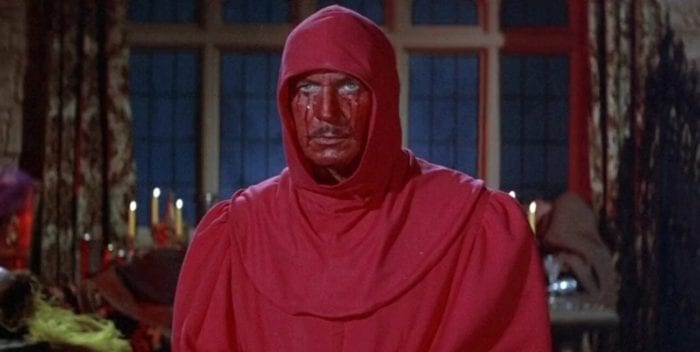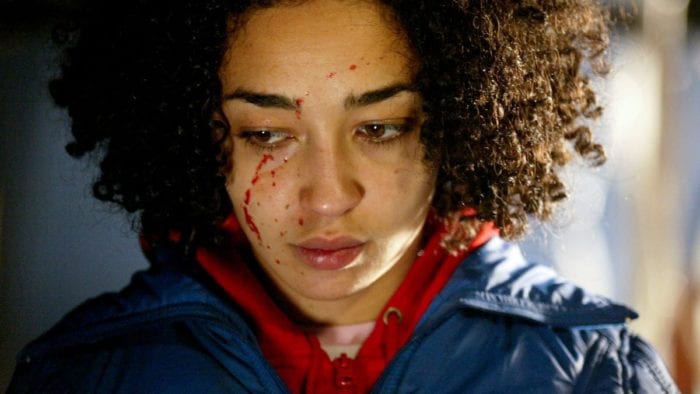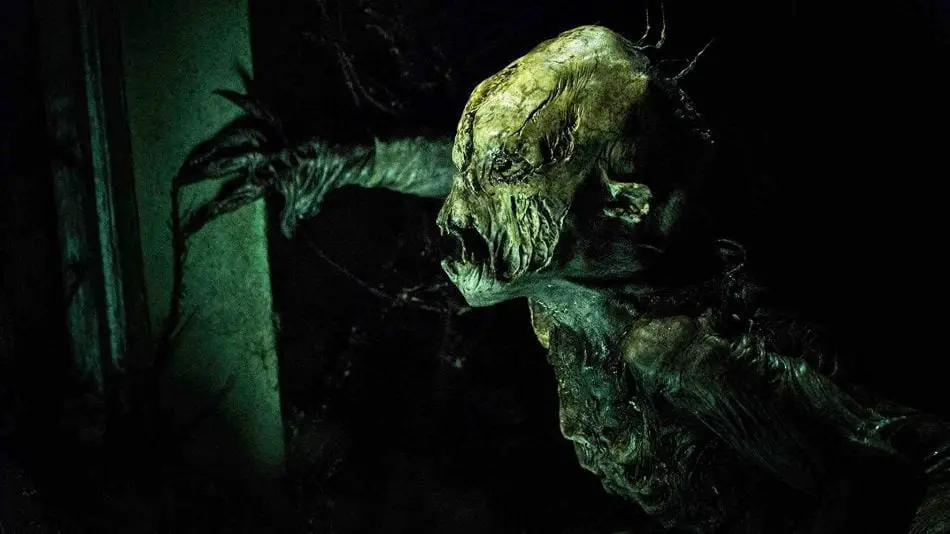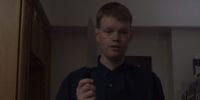My homeland of Ireland has a rich and storied history in the genre of horror; it has been exporting its tales of terror to the rest of the world for more than a century. The first major export was Bram Stoker’s legendary tale of Dracula in 1892, but his first vampiric work was published two decades prior in the shape of the novella Carmilla in 1872. Although Stoker is an undeniable factor in the proliferation of Irish horror, he was beaten to the punch by over half a century by Charles Maturin (Oscar Wilde’s grand-uncle) with the Faustian tale by the name of Melmoth the Wanderer, which came into the public eye near the beginning of the century in 1820.
So with the Emerald Isle finding itself firmly entrenched in the origins of the genre, it was no surprise that one of the first outings in the burgeoning genre was helmed by an Irish native. A Dubliner, Rex Ingram, would go on to direct The Magician (1926), a film about a magician in the search of virgin blood to re-animate a corpse. Ingram’s piece was adapted from the novel by Somerset Maugham and would ultimately prove to be extremely influential to the genre as a whole. Although the success of The Magician was clear for all to see, these embers would not ignite an Irish horror scene, and if it did, the fire was surely a slow burner.
Then finally, after almost 40 years in 1963, a young upstart director by the name of Francis Ford Coppola would persuade his boss at the time, Roger Corman, to send him to Ireland to make the B-movie Dementia 13 (1963). The story centered around an ax-wielding maniac and gold-digging widow, it starred William Campbell, Luana Anders, and Patrick Magee. Corman came to be known for this particular style of horror which bordered on the gaudy side of the genre, the pinnacle of which came with the classic The Masque of the Red Death (1964), starring horror legend Vincent Price.

Corman would later emigrate to Ireland in the ’90s, setting up shop on the west coast in Galway, establishing a studio of his own with the aim of producing more horror movies in the region. Corman succeeded at this aim, most notably in the mid-to-late ’90s with Escape to Nowhere (1996) which was followed three years later by The Haunting of Hell House (1999) for the ‘Roger Corman Presents’ series. At this stage, the Irish horror scene was a little more robust, which was mainly due to the success of Neil Jordan in the previous decade. Jordan’s second feature, The Company of Wolves (1984), was a new-age version of the Charles Perrault classic Little Riding Hood.
Jordan continued to make great strides in the genre over the coming years—four years later with the comedy/horror High Spirits (1988), starring Peter O’Toole, the majority of which takes place in a castle in ancient Ireland. After the release of High Spirits, Jordan’s name surely rang loud and true, but it wasn’t until the start of the ’90s that Jordan would make the leap to the mainstream and box office success with Interview With the Vampire (1992). The gothic classic was based on the Anne Rice novel and has a fervent fan base, but even with it all the acclaim of the Brad Pitt and Tom Cruise lead piece, the expected uptick in Irish horror over the following years never really came.
This lack of an uptick was not due to Jordan’s success being one in isolation. The Sleep of Death (1981) and Rawhead Rex (1986) were also both released during the ’80s, the former being based on a short by Le Fanu, and the latter focused on a demon terrorizing the Irish countryside and was penned by none other than the creator of the Hellraiser series, Clive Barker. This success was unfortunately not a sign of things to come and apart from the aforementioned movies, the ’90s made for slim pickings when it came to Irish horror. Then as that decade came to a close, a new one waited just over the horizon, and when one sees new horizons, they also see new opportunities.

Those new horizons for the genre in Ireland came on the back of the Mad Cow Disease scare in the region in the form of Conor McMahon’s Dead Meat (2004). The Irishman played on the fears of the recency of the scare, using it to tell a zombie story through the guise of infection from the disease. McMahon wouldn’t be the only auteur that used the Mad Cow Disease for inspiration, as in the following year Billy O’Brien would helm Isolation (2005). The Thing (1982) inspired horror starred Agents of Shield and Preacher star Ruth Negga, and Mission Impossible alum Sean Harris. It is set on a secluded Irish farm in which an experiment goes awry with deadly consequences.
2005 also saw the release of the Samantha Mumba-led zombie horror/comedy Boy Eats Girl, which was written by Derek Landy. Then a couple of years later the continuing diversity in the genre become more apparent with Shrooms (2007), a trippy terrifying story about a group of mushroom pickers who are stalked by a serial killer in the Irish woods. This was an excellent example of the growing confidence that Irish filmmakers were having in the genre. The following year saw another example of this with the more subtle The Daisy Chain (2008), which was directed by Aishling Walsh and starred Samantha Morton which focuses on a grieving mother and a malevolent spirit.
A similar theme would also be at the center of Wake Wood (2011), which was released three years later. It stars Aiden Gillen and Eva Birthislte as a couple grieving the death of their daughter, who looks to bring her back with the use of an ancient ritual, the only condition being that her resurrection will only last for a period of three days. This is a harrowing tale and both the leads are excellent in their portrayal of the grieving couple. The next year saw the release of Grabbers (2012), which was a chance for the genre to branch out into the realms of the creature feature. The premise of a group of friends that stop blood-sucking monsters by getting drunk sounds more than a little silly, but Grabbers does not fail to entertain. The Richard Coyle and Ruth Bradley-led flick once again provided evidence of the continual growth of the genre within the Irish shores.

2012 also saw the release of the Ciaran Foy directed Citadel, the success of which saw Foy land the director’s chair for the sequel in the Sinister series. Over the next few years, the genre continued to expand in 2015 with The Hallow (2015), a story about a family that finds themselves besieged by strange occurrences after moving to a remote house in an Irish forest. Then, two years later Ireland saw a particularly good year for horror. 2017 saw the release of a plethora of quality Irish horror. The Liam Gavin directed A Dark Song (2017), the Elliot Page led zombie horror The Cured (2017), the horror/thriller The Killing of a Sacred Deer (2017), which starred Colin Farell and Nicole Kidman in the lead roles. And lastly, the chilling gothic The Lodgers (2017), a story of orphaned twins confined to their home due to a curse was directed by Brian O’Malley and was more than a little reminiscent of the classics from Edgar Allen Poe.
The next two years saw the continued evolution of the genre in Ireland. First came the release of the gothic horror/drama, The Little Stranger (2018). Starring Domhall Gleeson, the period piece is set in the summer of 1948, where a Doctor travels to a great manor in denial that is haunted by a supernatural entity. The next year, Lee Cronin directed The Hole in the Ground (2019), starring Seana Kerslake, which used the Irish myth of the Changeling—an impostor that takes the place of children—combined with a stylistic approach similar to classics of the genre like The Exorcist (1973) and The Omen (1976) to create a truly haunting entry into the horror genre.
The resounding success of The Hole in the Ground saw Cronin “handpicked” by Sam Raimi to write and direct the next installment in the Evil Dead franchise. This is further evidence of the growth of the genre over the past few years, and how it keeps going from strength to strength in Ireland. With the increase of both the scope of the stories and budget backed by a rich history of folklore, there is plenty of fodder for future terror-fueled tales. Let us not forget that Ireland was the birthplace of Halloween—which is based on the paganistic ritual of Samhain. It is steeped in the history of horror, and with the ever-expanding Irish horror scene. Looking ahead, the future seems as fruitful as it does fright-filled.



